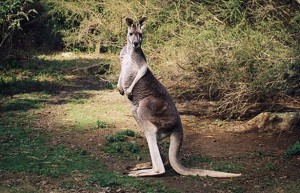 Curtis Gregory said 7 cases of the potentially debilitating disease had been confirmed within the Illawarra Shoalhaven Local Health District so far this year [2016].
Curtis Gregory said 7 cases of the potentially debilitating disease had been confirmed within the Illawarra Shoalhaven Local Health District so far this year [2016].
Statewide the number of cases has doubled in 5 years, from 130 in 2012, to 260 in 2015. In the 1st 6 months of 2016, NSW [New South Wales] Health has been notified of 88 cases.
“Q fever is a bacterial infection normally spread to humans by infected animals,” Mr Gregory said. “It’s mainly seen around agricultural and livestock industries and occupations but can be found in wildlife populations.” Mr Gregory said while case numbers were relatively low in the region, there had been some community concern over perceived hotspots. “We have seen numbers group around certain areas in the Shoalhaven like Sanctuary Point, although there have been some cases in the southern Illawarra,” he said. “We have done environmental sampling at different locations – of kangaroo and bandicoot droppings — but no positive results have been found.” Humans usually get infected by inhaling bacteria-carrying dust contaminated by animal urine, feces or birth products. “Those at higher risk of infection include abattoir and meat workers; farmers and shearers; stockyard workers and animal transporters; veterinarians and agriculture college staff and students,” Mr Gregory said. “Horticulturists or gardeners may also be concerned if there’s a lot of wildlife in the area, as activities like lawn mowing may put them at risk.”
